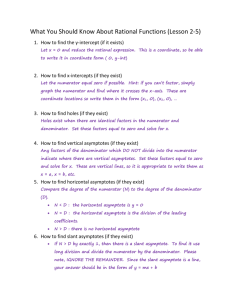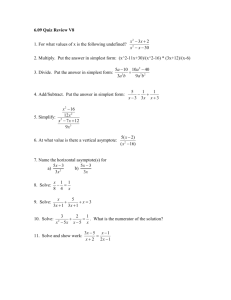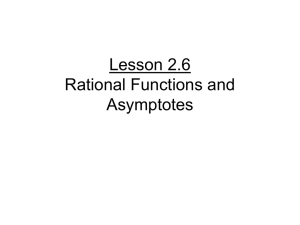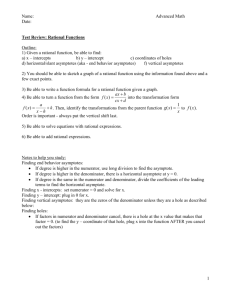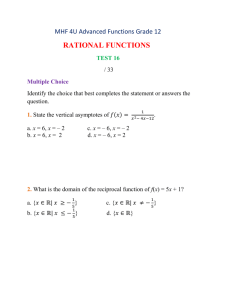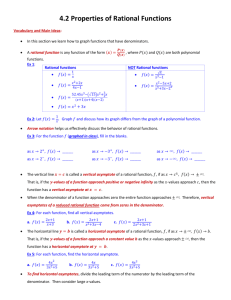Rational Functions: Asymptotes & Holes - Algebra 4 Worksheet
advertisement
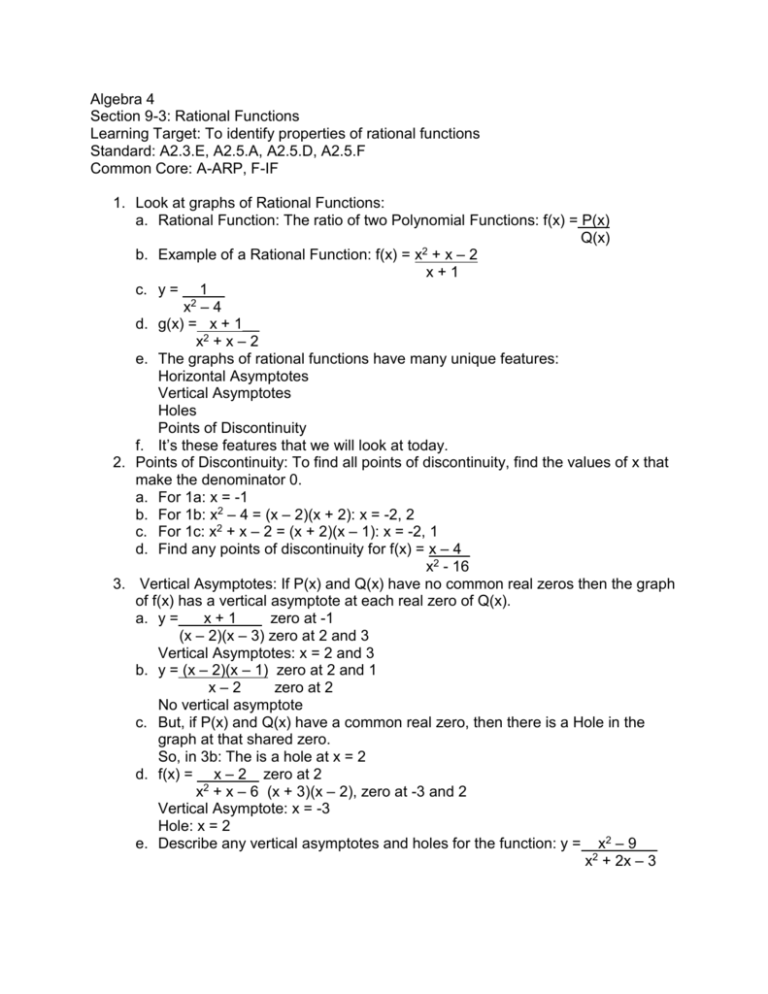
Algebra 4 Section 9-3: Rational Functions Learning Target: To identify properties of rational functions Standard: A2.3.E, A2.5.A, A2.5.D, A2.5.F Common Core: A-ARP, F-IF 1. Look at graphs of Rational Functions: a. Rational Function: The ratio of two Polynomial Functions: f(x) = P(x) Q(x) b. Example of a Rational Function: f(x) = x2 + x – 2 x+1 c. y = 1__ x2 – 4 d. g(x) = x + 1__ x2 + x – 2 e. The graphs of rational functions have many unique features: Horizontal Asymptotes Vertical Asymptotes Holes Points of Discontinuity f. It’s these features that we will look at today. 2. Points of Discontinuity: To find all points of discontinuity, find the values of x that make the denominator 0. a. For 1a: x = -1 b. For 1b: x2 – 4 = (x – 2)(x + 2): x = -2, 2 c. For 1c: x2 + x – 2 = (x + 2)(x – 1): x = -2, 1 d. Find any points of discontinuity for f(x) = x – 4_ x2 - 16 3. Vertical Asymptotes: If P(x) and Q(x) have no common real zeros then the graph of f(x) has a vertical asymptote at each real zero of Q(x). a. y = x + 1___ zero at -1 (x – 2)(x – 3) zero at 2 and 3 Vertical Asymptotes: x = 2 and 3 b. y = (x – 2)(x – 1) zero at 2 and 1 x–2 zero at 2 No vertical asymptote c. But, if P(x) and Q(x) have a common real zero, then there is a Hole in the graph at that shared zero. So, in 3b: The is a hole at x = 2 d. f(x) = x – 2 _ zero at 2 x2 + x – 6 (x + 3)(x – 2), zero at -3 and 2 Vertical Asymptote: x = -3 Hole: x = 2 e. Describe any vertical asymptotes and holes for the function: y = x2 – 9 __ x2 + 2x – 3 4. Horizontal Asymptotes: The graph of a rational function has at most only one horizontal asymptote. a. The graph of a rational function has a horizontal asymptote at y = 0 if the degree of the denominator is greater than the degree of the numerator. y = x – 4_ x2 – 16 Horizontal Asymptote: y = 0 b. If the degrees of the numerator and the denominator are equal, then the graph has a horizontal asymptote at y = a/b, where a is the coefficient of the of the numerator and b is the coefficient of the denominator. F(x) = 2x2 + 5 3x2 – 4 Horizontal Asymptote: y = 2/3 c. If the degree of the numerator is greater than the degree of the denominator, then the graph has no horizontal asymptote. H(x) = x2 – 25 x–5 No Horizontal Asymptote d. Find the horizontal asymptote for: y = -3x + 6 x–1


